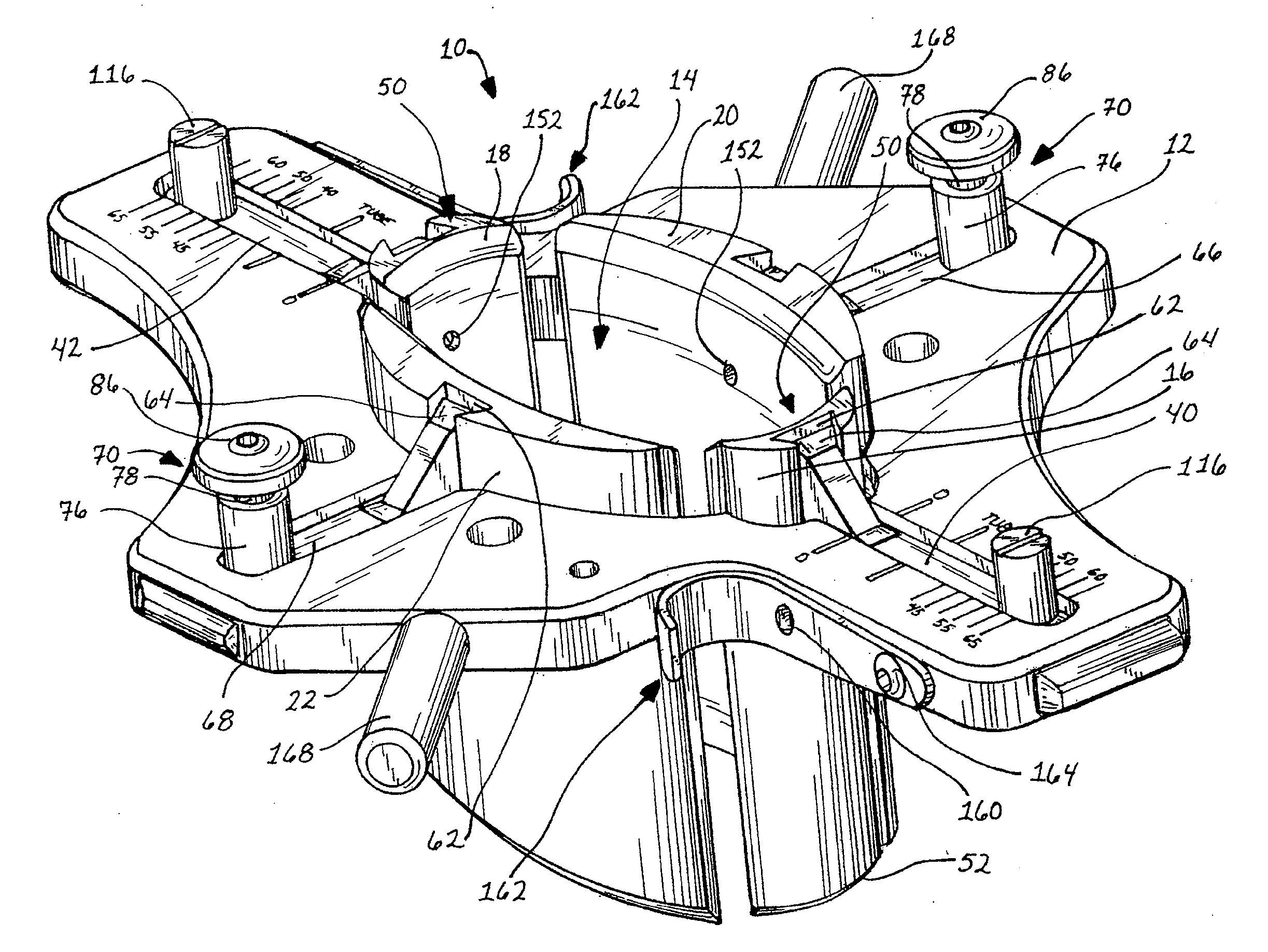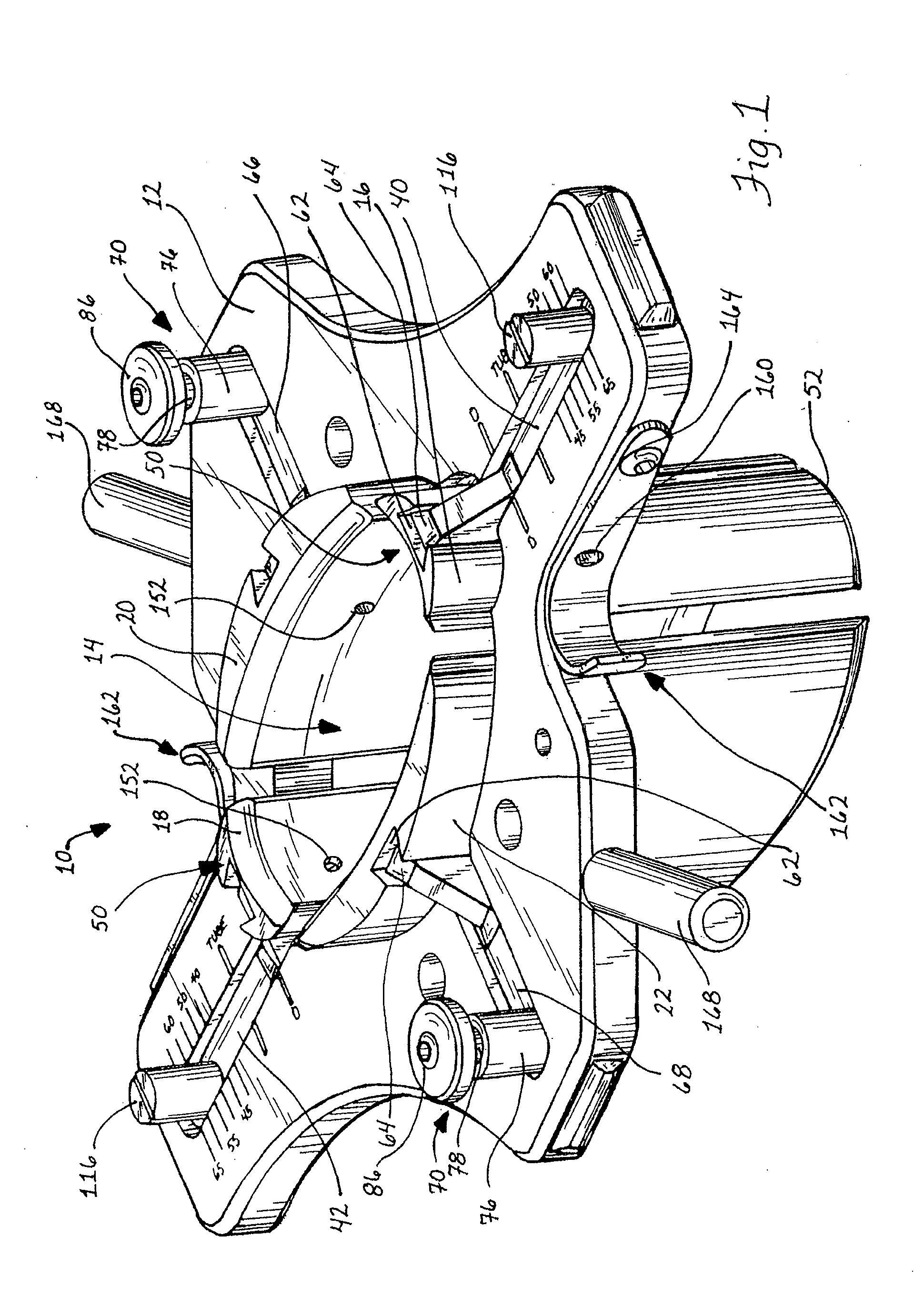Retraction Apparatus and Method of Use
a technology of retraction apparatus and retraction device, which is applied in the field of retraction apparatus and method, can solve the problems of significant space difference between blades, injury and trauma to the patient's body, and increase the difficulty of retraction, so as to minimize tissue and blood encroachment and optimize the access to the surgical site
- Summary
- Abstract
- Description
- Claims
- Application Information
AI Technical Summary
Benefits of technology
Problems solved by technology
Method used
Image
Examples
first embodiment
[0046] In FIG. 1, an access retractor generally designated 10 is depicted in the fully retracted or open position thereof. The retractor 10 includes a frame or body 12 having a large retraction opening 14 centrally located for viewing the surgical site. Inside the viewing window 14 are located a number of tissue engaging members, such as in the form of retraction blades 16, 18, 20, and 22. To keep gaps between adjacent, retracted blades to a minimum, it is preferred to undertake the retraction procedure in different stages so that retraction of an incision occurs sequentially with the preferred retractor 10 described herein. In the illustrated and preferred form, it is the narrower blades 16 and 18 disposed opposite from each other across the retraction opening 14 that are retracted during the first or initial stage of the retraction procedure and the wider blades 20 and 22 disposed opposite from each other across the retraction opening 14 that are retracted during the second or fin...
second embodiment
[0069] Turning now to a second embodiment, the access retractor 200 of FIGS. 15-32 is similar to the access retractor 10 of FIGS. 1-7 and 12-14, in that it comprises a generally planar body or frame 202 having a central, oblong or ovular opening 204. Opposing sliders 238, 240 and 242, 244 that slide in through slots 208 and 210 formed in both a longitudinal direction and a transverse direction. A first set of tissue engaging members, in this example comprising narrow blades 216 and 218, are releasably connected to associated sliders 238 and 240, as illustrated in FIG. 15-17, 19 and 20. A second set of tissue engaging members, in this example comprising wide blades 220 and 222, are releasably connected to associated sliders 242 and 244, as illustrated in FIGS. 19 and 20.
[0070] One difference between the first embodiment of the access retractor 10 and the second embodiment of the access retractor 200 is that the latter uses a ratchet mechanism associated with each of the sliders 238, ...
PUM
 Login to View More
Login to View More Abstract
Description
Claims
Application Information
 Login to View More
Login to View More - R&D
- Intellectual Property
- Life Sciences
- Materials
- Tech Scout
- Unparalleled Data Quality
- Higher Quality Content
- 60% Fewer Hallucinations
Browse by: Latest US Patents, China's latest patents, Technical Efficacy Thesaurus, Application Domain, Technology Topic, Popular Technical Reports.
© 2025 PatSnap. All rights reserved.Legal|Privacy policy|Modern Slavery Act Transparency Statement|Sitemap|About US| Contact US: help@patsnap.com



